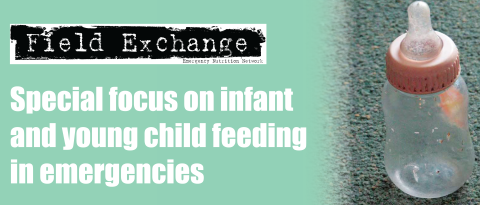Towards better documentation of mortality in crises
Summary of research1

A family in an IDP camp in DRC
A recently published article identifies the two main functions of mortality data in crises as the support of relief operations and evidence-building for advocacy /documentation. The authors then attempt to summarise how mortality within crisis-affected populations is documented at present, present their perceptions of the barriers to better mortality measurement and suggest ways by which these barriers might be overcome. Key issues raised in the article include the following:
The adoption of comprehensive mortality surveillance globally appears very limited. Although surveillance takes place in refugee camps (up to 8 million worldwide), there are 25 million internally displaced people (IDPs) and many more living in crisis conditions who are not under surveillance. Retrospective surveys are often employed but suffer a variety of methodological weaknesses, e.g. analysis and reporting may take weeks, results reflect past mortality, confidence intervals often overlap emergency thresholds and since cluster sampling is almost always used, estimates for different sub-regions within the surveyed area cannot be generated unless stratification is built into the sampling design a priori. There is, however, much work taking place to strengthen surveys, e.g. use of high-resolution satellites, expanding roll of telecommunications, etc.
Different players are involved in collecting mortality data, e.g. United Nations (UN) agencies, non-governmental organisations (NGOs) and local governments. However, there is a lack of coordination and efforts are piecemeal. Local governments often lack technical capacity or are not interested in documenting impact of conflicts that they are parties to, while the UN system's track record of documenting mortality and International Humanitarian Law (IHL) violations is poor. NGOs and human rights organisations and academics have partly filled the data collection void but have variable technical expertise, are often characterised in the press or by parties to the conflict as being biased and agenda driven, and can easily be barred from working by host governments.
Other issues relate to the political sensitivities of mortality data and the difficulties of collecting data in situations of conflict and insecurity.
The authors argue for the establishment of a technical, apolitical body dedicated to timely, systematic collection of valid morality data, especially in the least funded and publicised crises. Such a body could independently evaluate mortality study protocols and reports, promote best practice methods and train a cadre of researchers to be deployed to emergency crises. It could also constitute a resource for relief agencies and improve the quality of press coverage and discussion around ongoing crises. The fledgling Health and Nutrition Tracking Service, currently hosted by the World Health Organisation (WHO), proposed to coordinate some of the above tasks. However, if housed within a UN agency or government, its effectiveness might be hindered by negotiations between UN headquarters, the UN country office and the host government. The independence of such a body is critical and could be fostered through a number of measures, e.g. non-earmarked, long term funding by a very broad spectrum of donors with preference for politically neutral ones, ability to pursue projects without consulting donors, involvement of experts based on technical merit alone, etc.
The authors list a number of key future actions for better mortality documentation in crisis:
- Define best practices and develop simple tools for emergency mortality surveillance implementation and analysis.
- Promote and implement prospective surveillance systems as soon as possible after the onset of the crisis.
- Enhance communications among researchers, policy makers, the media and civil society to widen understanding of the strengths and limitations of various sources of mortality information in crises.
- Train a cadre of junior field researchers in emergency surveillance and survey methods, including NGO and UN staff, academics, and local government scientists.
- Compare various approaches to mortality estimation, and, if necessary do studies to establish the relative validity of various methods (including sampling and questionnaire design).
- Explore new methods for remote data collection (including remote surveys and satellite data analysis) and mortality prediction (including mathematical modelling).
- Establish a global process for evaluating the performance of donors by monitoring key indicators of population health in their funded projects, including mortality.
- Establish an independent body in charge of collecting mortality data on a systematic basis, especially in under-publicised and under-funded crises.
- Establish an independent expert panel (possibly housed within the above body) to arbitrate disputes about study validity, review study protocols and reports, and define best practices for mortality data collection in crises.
1Checchi. F and Roberts. L (2008). Documenting mortality in crises: what keeps us from doing better? PLoS Medicine. July 2008, volume 5, issue 7, p1-8. Open-access article available at http://medicine.plosjournals.org
Imported from FEX website


